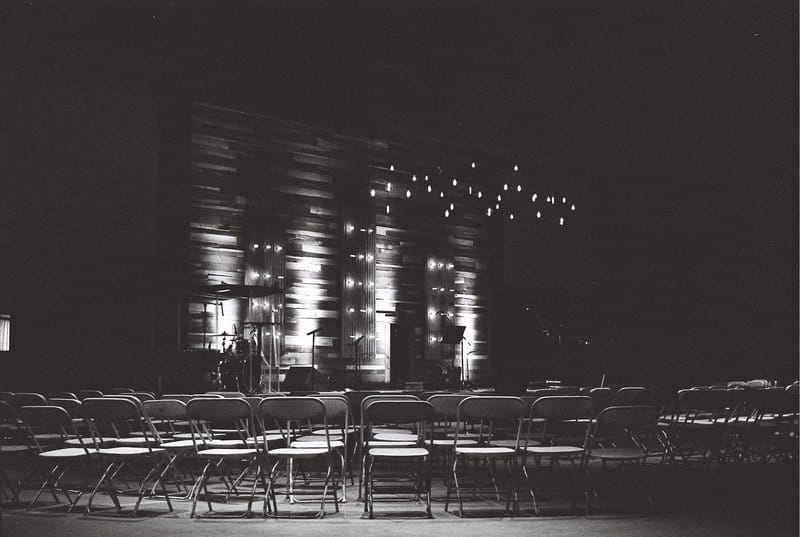
There are around 13,000 events held in the U.S. every year. How do you choose the right trade show to attend?
An entire board of directors is constantly calling the shots for your business. But when it comes to a marketing strategy that you know can make or break your brand’s reputation, you’re the only one in the driver’s seat.
You want to succeed, but there seems to be an endless list of events to choose from. Moreover, it’s not uncommon for you to be faced with tricky situations where you have to choose between two or more high-stakes trade shows that are only held once every few years and their scheduled dates overlap.
All of a sudden, the pressure is on.
How you navigate difficult decisions like the ones above or choose between different trade shows when each brings their own benefits for your company is what this article is all about.
But first, let’s dig into why is it so important to find the right trade show to attend, the first time around?
Why the trade show you choose matters more than you think
The most costly mistake an event organizer can make is choosing the wrong event to attend.
Attending a trade show is an investment. And just like with any other investments you make for your company, you want to make sure that your effort, time, and resources pay off.
Here are the main reasons why you want to make sure the event you chose has big potential to drive traffic, leads, and profit to your business:
Preaching to the wrong audience costs you sales
98% of trade show attendees are more likely to make a purchase if they are at least slightly interested in the product or service they’re being sold to begin with. But if you go to an event and try to market to people who aren’t even remotely drawn to what you have to sell, the best you’ll get is a few extra leads.
Remember: you don’t just want quality leads from your trade show marketing, you also want numbers. And a successful trade show will bring you both.
On the other hand, choosing the wrong event to attend will lead to you barking up the wrong tree – not only will you be spending valuable resources with nothing to gain back, but you’d also be boring or annoy people in the process. You want to build a strong reputation for your brand that boosts sales, not leave prospects with a bad taste in their mouths when they think of your business.
Exhibiting isn’t cheap
Although attending trade shows is one of the most powerful and underrated marketing tools you have at your disposal, it’s also one of the most expensive. So you want to make the most of every dollar you spend from your budget. This includes choosing the right event without three or four previous costly attempts that failed.
Marketing at the wrong event will let competitors get an edge on you
If people have a poor experience at your event, they’ll talk about it. Choosing the wrong trade show will not only hurt your reputation and alienate consumers, but it can also be the push your prospects need to switch to your competition.
Imagine that you’ve got a wide pool of potential customers, all ready to buy from you if given the right circumstances. But instead of getting in touch with your leads and converting them at your next trade show, you’re stuck at the wrong event while your competitors are warming up to your prospects.
So, what should you do instead? 👇
How to select a trade show in 5 simple steps

It’s quite common that trade shows are seasonal or organized at around the same time each year. Given how important timing is when it comes to event marketing, you’ll need to be strategic when you choose your timeline and location.
To maximize your chances for success, you’ll want to follow these 5 steps:
1. Identify your intent and goals
Before digging deep into researching different venue options, you should take some time to clearly define your objectives.
What is the intent behind this event? Are you looking to build a stronger relationship with your customers or draw in fresh leads? Maybe you’re launching a fresh version of your product and you want to update your audience on the new features they can play around with.
Once you have a clear answer to this question, you can begin your search for the perfect venue. Which brings us to step number two.
2. Research, research, research
Always do your homework before making any final decisions. When it comes to researching trade shows, statistics are your friend. Look into the demographics, sales, and the number of attendees for each event on your list.
Gather information on the industry and local market, identify your buyer personas and estimate how good of a fit your product will be for the trade show’s audience and their needs. You can find a quick trade show evaluation template that you can use to organize your data better here.
3. Always check the event’s history
This should be your main starting point for discerning between trade shows. After you’ve researched all there is to research regarding your potential event, take a look at its history and past attendance. Also, here are some questions to ask in the process:
- What is the event’s reputation?
- How much buying power did the trade show have?
- Which of the industry’s big players attended it?
- How well did the event do in terms of sales and networking?
- Did any of your top competitors participate?
- Does the event fit into your budget?
- Where is the trade show advertised?
- What are the main statistics you can find on last year’s event?
- Does the trade show’s theme match the why behind your company?
4. Show up in person
A trade show can look great on paper, but be poorly executed and lacking in practice. Or it simply might not be the right choice for you and your marketing needs. The next step to help you decide between venues is to actually go to the location itself and see what each option has to offer firsthand.
But don’t stop there. Start conversations with the people you find there, explore the surroundings (best restaurants you can dine at, transportation, hotels), and see what the showroom looks like in person.
You could also consider contacting non-competitors who have attended in the past and get their input as well. They might have valuable insight for you that will be critical for your final decision.
5. Plan ahead to put it all together
Once you’ve narrowed down your list to a few final names, it’s time to set a smart schedule to make sure everything is in order and none of your events overlap. It’s also important to have a plan in place for unexpected situations and consider how each trade show will fit into your timeline and budget.
If you need help with this, we’ve put together a comprehensive trade show checklist and dashboard with over 100 tasks and items. This will optimize your schedule for profit, keep track of your budget, and allow you to crosscheck summaries of all the events you have planned.
So, which trade shows do you plan on attending this year?
Let us know in the comments below. 😉